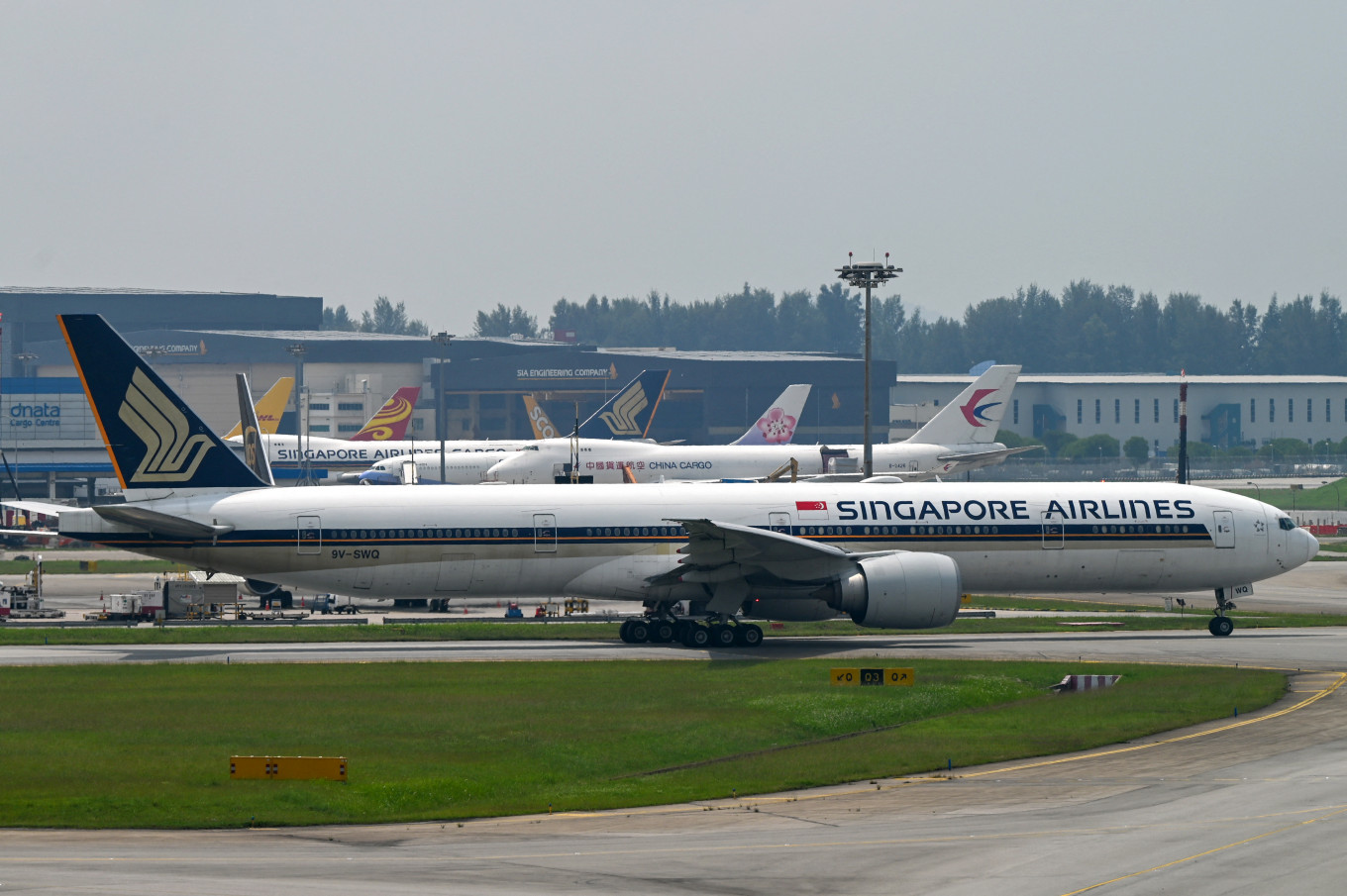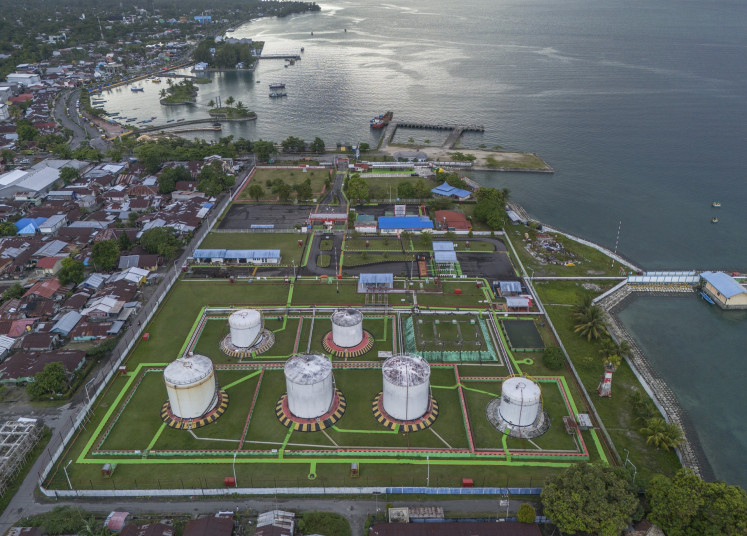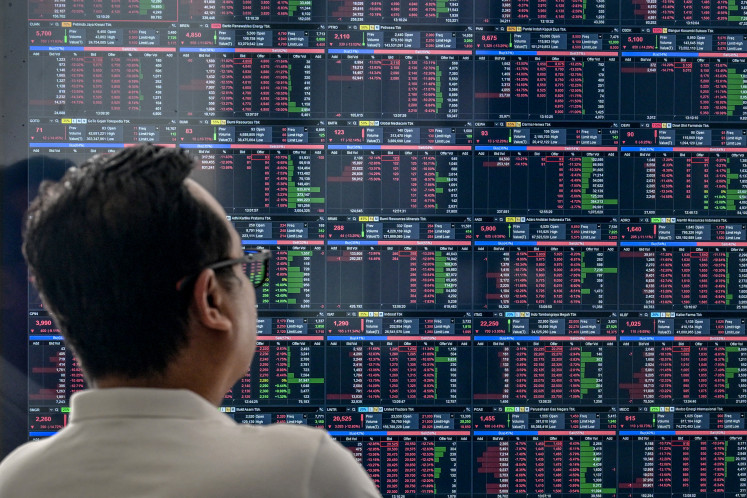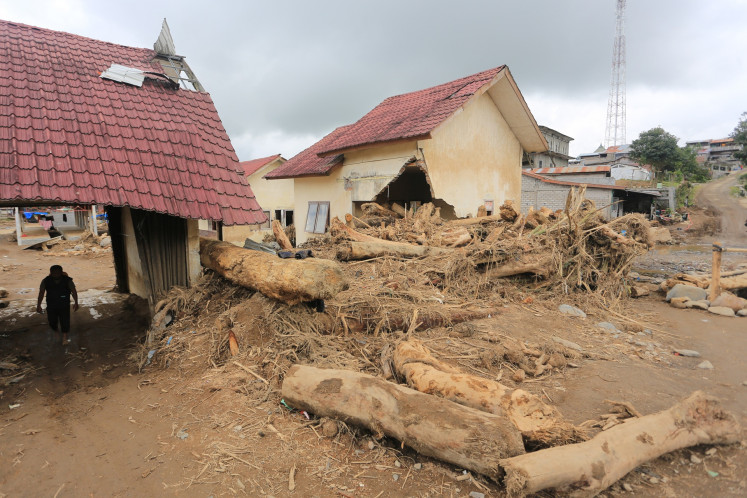Popular Reads
Top Results
Can't find what you're looking for?
View all search resultsPopular Reads
Top Results
Can't find what you're looking for?
View all search resultsSingapore Airlines outlook warning casts a shadow over air show
The Asian airline's biggest one-day share price plunge since the global travel industry ground to a halt in March 2020 because of COVID-19 came after its December quarter earnings missed market expectations on Tuesday.
Change text size
Gift Premium Articles
to Anyone
 More seats: A Singapore Airlines Boeing 777-300ER airplane plies along the taxiway of Singapore Changi Airport in Singapore on May 13, 2022. The airlines is adding an extra flight for the 2023 Idul Fitri travel season to the Soekarno-Hatta International Airport as well as the sixth flight daily to I Gusti Ngurah Rai International Airport. ( AFP/Roslan Rahman)
More seats: A Singapore Airlines Boeing 777-300ER airplane plies along the taxiway of Singapore Changi Airport in Singapore on May 13, 2022. The airlines is adding an extra flight for the 2023 Idul Fitri travel season to the Soekarno-Hatta International Airport as well as the sixth flight daily to I Gusti Ngurah Rai International Airport. ( AFP/Roslan Rahman)
A
warning from home carrier Singapore Airlines that ticket prices were coming under pressure as costs are also rising sent its shares down nearly 10 percent on Wednesday, casting a shadow over the Singapore Airshow.
The Asian airline's biggest one-day share price plunge since the global travel industry ground to a halt in March 2020 because of COVID-19 came after its December quarter earnings missed market expectations on Tuesday.
It underscored broader aviation industry concerns about supply chain constraints and a more cautious outlook in Asia as China's international travel recovers from the pandemic at a slower pace than in much of the rest of the world.
At the air show, Taiwan's Starlux Airlines placed an order on Wednesday for five Airbus A350 freighters - with an option for five more - and three A330neo wide-body passenger jets, a day after rivals Boeing and COMAC of China announced sales of their own.
Starlux wants to become a transit airline for passengers from Southeast Asia to North America and to take advantage of cargo flows from South Asia to North America, CEO Glenn Chai said.
But even as the orders rolled in, Singapore Airlines said on Tuesday that high fuel prices, inflationary pressures and supply chain constraints were presenting challenges to airlines globally.
"Passenger yields continue to come under pressure from increased competition as capacity restoration continues across the industry," the airline added.
The carrier's net profit, while still strong, has fallen for two consecutive quarters after reaching a record in the June quarter last year, when it was buoyed by strong post-pandemic summer travel demand.
"Last year was pent-up demand, revenge travel," Mabel Kwan, a Singapore-based managing director at Alton Aviation Consultancy, said on the sidelines of the air show. "What is going to take over is longer term macroeconomic fundamentals."
"The results are looking past the pandemic recovery, fundamentals taking over a little bit, a little bit of tapering to normalisation from that high growth that we had last year," she added.
The Singapore carrier's warning followed Air New Zealand's on Monday flagging weaker-than-expected results in the six months through June because of challenges from engine maintenance requirements, economic and inflation risks, early signs of softness in domestic demand and intense competition on US routes.
US-China flight capacity remains more than 75% below pre-pandemic levels this month, according to aviation data provider OAG, with services being restored slowly amid tensions between the governments. In the meantime, US carriers have sent more long-haul aircraft to Australia and New Zealand, pressuring fares in those markets.
Other challenges for airlines include the need to ground some planes for engine inspections to check for potentially flawed components.
Philippine low-cost carrier Cebu Pacific has 10 Airbus A320neo family planes out of service as workers check RTX subsidiary Pratt & Whitney's GTF engines, its chief executive Michael Szucs said on the sidelines of the air show.
Air New Zealand, which also uses the engines, said the inspections would cost it NZ$35 million ($21.64 million) in the current half, including the cost of short-term leased aircraft and adding contact centre resources for affected customers.










